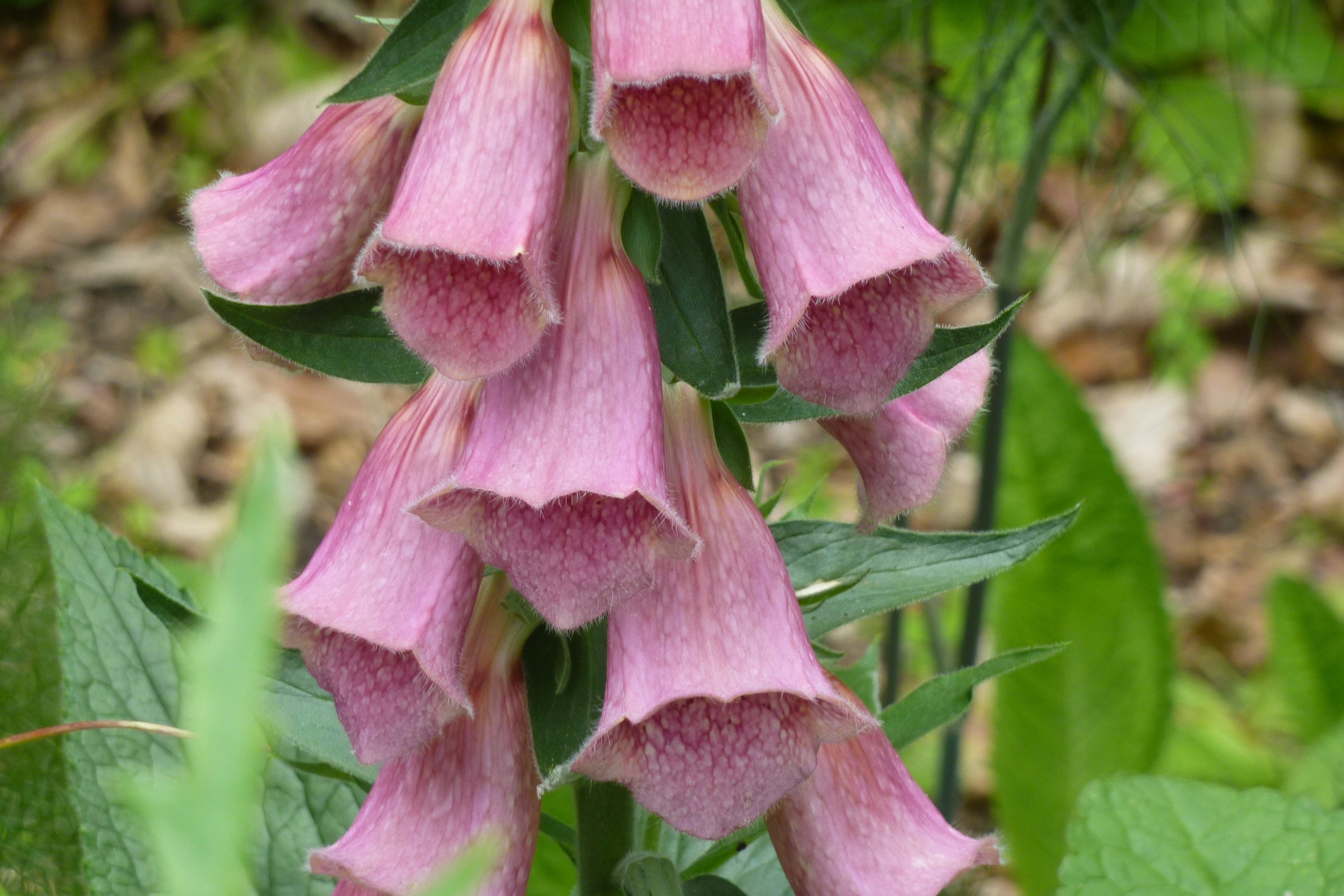Digitalis x mertonensis
Approx. 0.5 litre pot
About this cultivar:
Digitalis x mertonensis produces strawberry coloured flowers borne from terminal racemes atop leafy tall spires arising from the centres of basal rosettes. Commonly called the strawberry foxglove because of its colour. The pendulous, tubular, funnel-shaped, flowers are closely grouped along each spike. The long medium green, velvety leaves usually remain attractive throughout the growing season.
It is a hybrid, short-lived perennial which is a cross between Digitalis purpurea (biennial) and Digitalis grandiflora (perennial). The flowers are larger than both parents. I believe it first came out of the John Innes Horticultural Institution in 1924
You'll probably get 2-3 years out of this one, maybe more if you divide it often. We tend to just let it self seed and it doesn't go nuts!
It has the Royal Horticultural Society Award of Garden Merit. The RHS have it as an semi-evergreen (so I have marked it as such) but it can be deciduous, especially after a wet winter.
- Position: Full sun, partial shade
- Soil: Almost any soil, grows well in Ballyrobert
- Flowers: June, July
- Other features: Royal Horticultural Society Award of Garden Merit (RHS AGM), Grows well in Ballyrobert, Bees and Butterflies
- Hardiness: H6 - Hardy in all of UK and northern Europe (-20 to -15°C), Fully hardy, grows well in Ballyrobert
- Habit: Columnar or Upright, clump forming
- Foliage: Semi evergreen
- Height: 60 - 90 cm (2 - 3 ft)
- Spread: 30 - 60 cm (1 - 2 ft)
- Time to full growth: 2 to 5 years
- Plant type: Herbaceous Perennial
- Colour: Green, pink
- Goes well with: Achillea, Geranium, Campanula, Aconitum
About this genus:
Digitalis is a genus of about 20 species of herbaceous perennials, shrubs, and biennials commonly called foxgloves. This genus was traditionally placed in the figwort family (Scrophulariaceae) but is nowadays in the plantain family (Plantaginaceae).
The genus name comes from the Latin digitus meaning ‘finger’ for the flower shape. Leonhart Fuchs (of Fuch-sia fame) first invented the name for this plant in his 1542 book ‘De historia stirpium commentarii insignes’ based upon the German vernacular name ‘Fingerhut’, which translates literally as 'finger hat', but actually means 'thimble'. The name is recorded in Old English as foxes glofa. Some theories propose this is from folks' glove, where fox meant folk means fairy. Similarly there is a suggested etymology of foxes-glew, meaning 'fairy music'. But, who knows!?
You may be aware that some species have been used in medicine, but, depending on the species, Digitalis may contain several deadly toxins! Thus, the genus has also earned several, more sinister, names: dead man's bells and witch's gloves. Don’t eat or drink!
So that is all interesting and fun but what about the physical plant? In summer tall spikes emerge from basal rosettes of green, oblong leaves. The spikes present tubular-ish flowers that vary in colour with species, from purple to pink, white, and yellow. Some die right back in the winter, but some can be evergreen.
They can get big within a year or two but are normally shorted lived, most species I think are biennial. Even the perennial species tend to be shorted lived. Speakign of which......It seems that every year there is a new 'true long lived perennial foxglove!' bred and introduced by the industry..... but meh! We trial them all, not true (yet) don't be fooled.
They are so short lived we are cautious about selling them since we normally stick to growing long lived perennials only. However a few foxglove species can be so lovely we have them in the garden and let them self-seed. Frequently, following the first fantastic flush of flowers folk (foxes? fairies?) cut them back to encourage a second flush. Fhew.
The digitalis we grow are usually not too aggressive, but some species, can be like weeds, seeding everywhere, so you have to discriminate between the species. Basically the cheaper the weedier (because the weedier they are the cheaper they are to produce!). This tends to be true for all plants in all fairness...
Native to Europe, western Asia, and northwestern Africa, they will grow anywhere that isn’t too extreme but will thrive in sun. They are often seen as the quintessential ‘Cottage’ garden plant but don’t be limited by that style. The tall spires provide good architectural height to the summer border and are particularly effective in front of dark backgrounds such as those provided by a wall or shrubs. Also effective in woodland gardens or naturalized areas, where the self seeding behaviour looks great and is usually welcomed!




